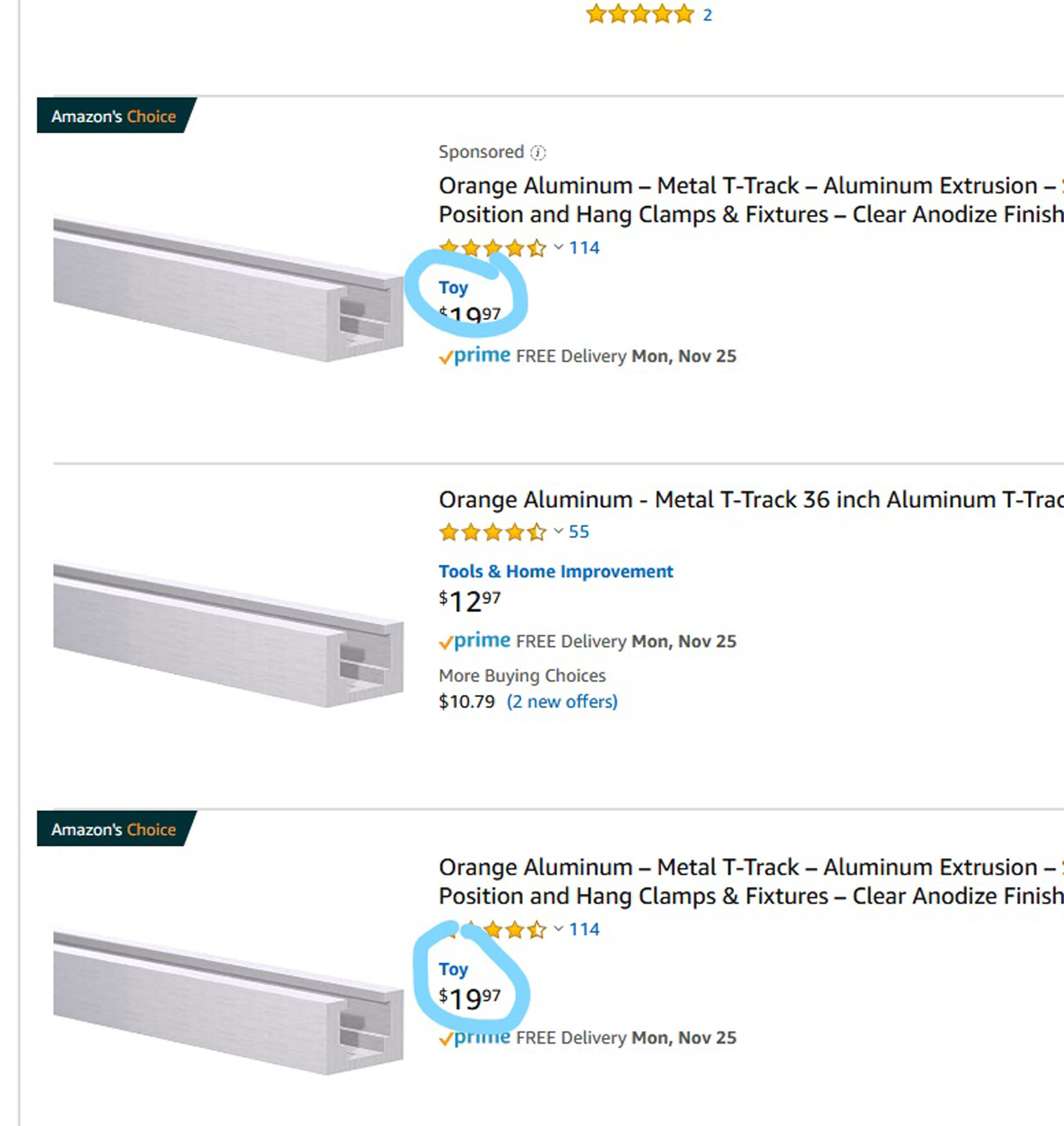Specificity is king when it comes to designating your product line on the Amazon marketplace. By selecting the most appropriate browse node, and uploading all the relevant specs, you are doing everything to help your product line rank organically for relevant search terms.
However, Amazon has been known to mysteriously change the product category designation for certain products without notice or reason. When this happens, most of the time the product will still be available for purchase on the Amazon marketplace, and there won’t be any immediate impact on existing advertising campaigns.
But a sudden and unauthorized change in product category can have devastating effects over the long term. You may be confronted with higher Amazon fees, less than optimal organic and paid performance, and a downward trajectory in terms of gross sales.
In this article, we’ll share an example where an Acadia client was overcharged $16k by Amazon due to an unexpected browse node alteration. We’ll also discuss how to spot an unwarranted category change, what can happen after a change occurs, and how to effectively troubleshoot.

WHY WOULD MY PRODUCT CATEGORY CHANGE?
When you launched your product line on Amazon, you hopefully went through the process of selecting the most appropriate category for each item. We outlined all of Acadia's recommended best practices for selecting a product category in a recent blog post Getting Specific: Picking The Right Product Category On Amazon.
As you would imagine, an unexpected product category change can throw a massive wrench in your Amazon SEO strategy. There are a couple of reasons why a change may occur.
Firstly, Amazon bots or Category Specialists may make the changes if they don’t agree with the initial category selection, potentially due to supporting evidence from customers/other sellers. Secondly, it’s been suggested that other competing sellers may purposefully push through a category change as an underhanded way to gain an algorithmic advantage within the crowded marketplace. And in some rare instances, it’s been reported that brand owners will actually lose control of their listing if they’ve been moved over to a gated category that requires seller approval. Unfortunately, Amazon won’t typically disclose why a category change occurred, even if the change turned out to be a mistake.

Above: This product should be in the ‘Tools & Home Improvement’ category, but for some unknown reason, it’s been re-classified within the ‘Toy’ category.
Whatever the reason, it can be extremely frustrating when/if this happens, and may seriously impact your momentum on the marketplace.
As for identifying a change, Amazon will not send you any form of notification, therefore it’s something you’ll need to monitor manually. Keeping close tabs on your product listing content is an absolute must for all brands selling on Amazon. In addition to product category changes, you should also be keeping a close eye on other important front-end metrics, such as unauthorized sellers and product reviews.
WHAT IS THE POTENTIAL FALL-OUT FROM AN
UNAUTHORIZED CATEGORY CHANGE?
Typically, the most direct fall-out from a product category change is a difference in Amazon’s per unit fees. Even if it’s just a few percentage points difference, this can quickly add up, especially for popular products.
An Acadia client selling in the Home & Kitchen space had to contend with an unauthorized product category change recently.
“The higher Amazon fees were discovered by our project team on a regular daily check of the account,” said Acadia Client Services Director Emily Peterson. “Upon further investigation, the issue arose because Amazon changed the category of the product to ‘Digital Accessories’, which has a much higher referral fee structure. We tried to manually change the product category in the back-end of Seller Central and with a flat file upload, but neither solution was successful.”
Unfortunately, finding a remedy was not a simple process.
“The Acadia team opened cases with Seller Central and then with Brand Registry. Nothing happened and the case was stuck at ‘pending Amazon response’ for months,” Emily explained. “We would continue to send messages and ask for a status update but it was always a standard response along the lines of ‘the case has been transferred to the team who manages this enquiry’. Eventually we asked the client to email Jeff Bezos directly, and this is what appeared to spark the resolution process. A few weeks later, Amazon put the listing back into the correct category, and then that’s when our reimbursement process started.”

The impact of the category change was significant. For this client, the Acadia team calculated what the correct fee should have been (based on the intended category for the client’s products), and then calculated the difference in cost due to the new, inaccurate category.
“We pulled the report to find out the total numbers of units sold, crunched the numbers, and found that Amazon owed our client just over $16k USD,” Emily said. “As of today, Amazon have reimbursed our client $13k USD. We’re continuing to fight for the remainder of the total as we speak.”
Emily also explained the broader implications of running into such a pickle.
“Fortunately, for this particular client, the category change didn’t seem to have any discernible impact on sales or share-of-voice performance. We were still ranking strongly for all core search terms and our ad campaigns were still generating impressions and clicks,” she said. “But obviously, $16k is not an insignificant amount of money. It could be used for capital expenses or product manufacturing, things that could seriously help grow your business. Product category changes are so dangerous because they often slip under the radar. Amazon won’t acknowledge the error unless you pester them about it, and the damage can quickly spiral out of control.”
MY PRODUCT CATEGORY HAS CHANGED - HOW DO I FIX IT?
If you believe that something has gone awry with your category designations, then it’s in your best interest to act promptly to find a resolution.
As mentioned earlier, it’s possible to notice a category change on the “front-end”, that is either on the search results page, or the product listing itself. Importantly, there is no visible category listing report in Seller Central. However, you can get a category listings report by contacting Seller Support and asking them to unlock this report. Once they confirm, refresh your Inventory reports page, and you should see the category listings report will be added to the drop down menu. Select that report & export. If you notice any changes, it’s likely your product designation has been changed.

“Product category changes are so dangerous because they often slip under the radar. Amazon won’t acknowledge the error unless you pester them about it, and the damage can quickly spiral out of control.”
- Emily Peterson, Client Services Director
Sellers are able to log in and use this tool to change a product classification, or you can simply submit an updated Flat File (all the different product classification options are outlined in Amazon’s Browse Tree Guides) within Seller Central. Vendors will need to login to Vendor Central and create a case with Support.
Sometimes the request will go through easily and your product will revert back to the original classification. Or you may have to follow-up with Support several times, and escalate to Jeff Bezos if you aren’t making any progress.
Finally, once you’re back in the right category, it’s worthwhile to find out if you’re due a reimbursement from Amazon. Just like we did for our client in the example above, figure out exactly how many units were sold whilst being incorrectly designated, and calculate the total difference in fees.
Note: if you are a brand owner and other parties were selling your products on Amazon before you created a Seller and/or Vendor account, there’s a strong possibility that some of your products may be in the wrong category, due to a mistake by the original product listing creator. So checking the validity of your product categories is particularly important for brands new to the Amazon platform.
CHECK, CHECK & CHECK AGAIN!
As most seasoned Amazon veterans can attest, in the case of operational account problems such as unexpected category changes, it’s a case of if rather than when. And just because you are able to find a solution to one specific problem, doesn’t mean that you won’t encounter the exact same problem again in the future.
Having robust systems that help you identify and solve account problems as they arise is an absolute necessity for brands looking to scale their Amazon presence.
